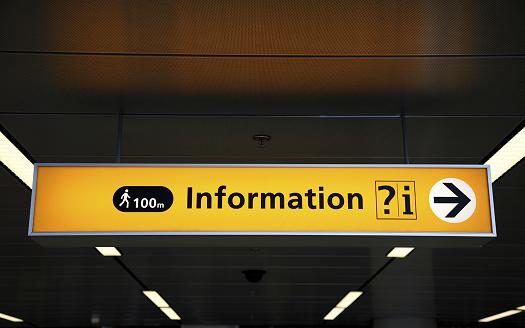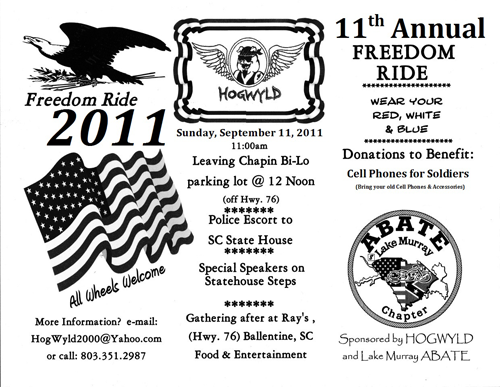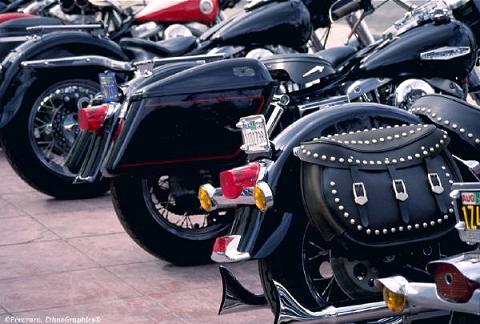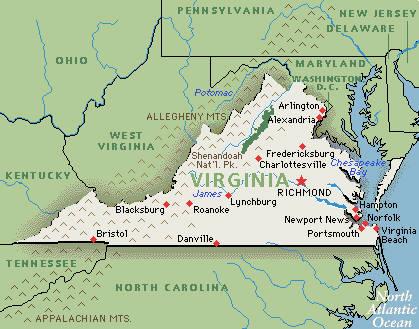 As Goose Creek motorcycle accident lawyers who ride, we know that riding a bike is not only a lot of fun, but it also makes good financial sense. The cost of ownership of a motorcycle is typically much less than that of a car, as you’ll see below.
As Goose Creek motorcycle accident lawyers who ride, we know that riding a bike is not only a lot of fun, but it also makes good financial sense. The cost of ownership of a motorcycle is typically much less than that of a car, as you’ll see below.
Great gas mileage.
Motorcycles are capable of 60 mpg or more in town—and even more on the highway—while non-hybrid cars average 25-30 mpg in town at best. The gas tank on a motorcycle is just a few gallons, so you benefit twice: fewer fill-ups for much less each time, putting more money in your pocket.
Few mechanical issues and lower cost of maintenance.
The simplicity of the motorcycle engine means you have fewer things that can go wrong, and those who are mechanically inclined can easily learn to fix most issues. Cars have become so complicated, with so many sensors and computers, that you need to take them to a competent mechanic or the dealership, which is expensive. Parts for bikes are also relatively cheaper than car parts.
With a motorcycle, you have fewer tires and less oil to buy, and routine maintenance on a motorcycle engine is simple and inexpensive.
Lower cost for insurance and license plates.
Bikes are cheaper to replace than cars, and they do much less damage to other vehicles, so liability, comprehensive, and collision coverage for motorcycle insurance is less than for auto insurance. However, motorcycle accidents tend to cause more bodily injury than car accidents, so some companies may have higher rates for that coverage. In addition, you may be required to add passenger coverage if you regularly ride with someone. As always, shop around.
In many places, license plate cost is based partially on the weight or the value of the vehicle, making motorcycle plates cheaper.
Less expensive to buy than a car.
If you buy a used motorcycle, you can get away with paying much less for a good bike than you can for a good car. Even if you splurge and buy a new motorcycle, you’ll probably pay much less than you will for a new car. Sales and use tax will also be less for a motorcycle.
Fun, inexpensive entertainment.
Taking a ride on your bike, even if you travel a long distance, is less expensive than a dinner and movie or a sporting event. And you’ll have just as much fun, if not more.
What’s your favorite part of saving money by riding your motorcycle?
 All too often, people arrive at motor vehicle hearings unprepared, when a little homework and knowledge would make all the difference in the outcome. The Office of Motor Vehicle Hearings (OMVH) is meant to be an objective and fair meeting place to hear your case, but you need to know what you’re doing before you go.
All too often, people arrive at motor vehicle hearings unprepared, when a little homework and knowledge would make all the difference in the outcome. The Office of Motor Vehicle Hearings (OMVH) is meant to be an objective and fair meeting place to hear your case, but you need to know what you’re doing before you go.
First, be sure to thoroughly study all the documentation you receive from the OMVH, so you know what’s going on and what you’ll need to do. Many people skip this and later wish they hadn’t. If you have to go through a hearing, you want to win, and understanding the documentation is the first step in that direction.
A Hearing Officer will be assigned to your case, and if you need to contact his or her assistant, that information will be in the brochure you receive. You cannot speak with the Hearing Officer directly unless the other parties to the case are present. The assistant will help you with scheduling and answer procedural questions, but no one in the OMVH can offer legal advice.
Second, decide whether you want an attorney to represent you. You can represent yourself (pro se) or retain an attorney—no one else can argue your case at the hearing. As South Carolina auto accident attorneys, of course we recommend you protect your rights by hiring legal counsel, but only you can make that decision.
Your case documentation will include deadlines you must meet. If you need to file any kind of motion or response, it must be done in writing and mailed or hand-delivered. If you use the mail, we recommend that you send it registered or certified so you have proof of receipt. Your docket number must appear on everything, and anything you send to the OMVH must go to every party in your case.
If you and the parties to your case settle the matter out of court, or you wish to withdraw your request for a hearing, notify the Hearing Officer immediately by phone or in writing. Otherwise, your hearing will proceed much like a trial, with opening and closing statements, presentation of evidence, and examination of witnesses.
If you have requested the hearing, you have the burden of proof. Be sure you have credible witnesses and documentation proving your side of the case. Anything you submit into evidence becomes the property of the OMVH. You have the right to subpoena witnesses, but you must arrange and pay for it. Always present yourself as professionally as possible, and stick to the facts of the case.
The Hearing Officer issues a written decision as soon as possible, but no guidelines govern decision timelines. If you wish to appeal a decision, you may do so within 30 days after you receive the decision, and an Administrative Law Judge will hear the appeal.
For more information, click here to download the Office of Motor Vehicle Hearings guide.
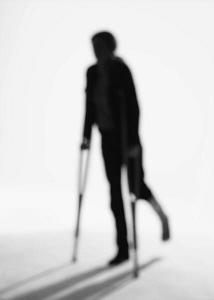 As Charleston motorcycle accident lawyers, we encourage our clients to resume riding as soon as they feel comfortable after an accident. It’s normal to be anxious or afraid of the bike after an injury, but the sooner you get back in the saddle, the sooner you put the motorcycle accident behind you. After helping many clients go back to riding, we’ve found a few tips that really help.
As Charleston motorcycle accident lawyers, we encourage our clients to resume riding as soon as they feel comfortable after an accident. It’s normal to be anxious or afraid of the bike after an injury, but the sooner you get back in the saddle, the sooner you put the motorcycle accident behind you. After helping many clients go back to riding, we’ve found a few tips that really help.
Put the accident or injury in perspective.
How long have you ridden without an injury or accident?
Thousands of miles? Tens of thousands of miles? More?
How many years have you ridden injury- and accident-free?
When you start thinking of your riding by the numbers, you’ll see that while the injury was a significant event at that point in time, in the grand scheme of things it’s not as significant as you thought it was.
Think about what you could have done differently, if anything.
Was the injury your fault, or someone else’s? If it was yours, think about what you could change to reduce your risk in the future. Usually one tweak will make a tremendous difference. If you were lane splitting, perhaps you’ll stop or do it only in specific circumstances. If you weren’t wearing a helmet, maybe now is the time to start.
And sometimes an accident is just that—an accident. Don’t let what happened in a single moment stop you from doing something you enjoy.
Consider a new level of protection and perhaps a safety class.
Helmets, leather, and other protective gear reduce your chances of injury, but are a choice only you can make. For some, this gear is uncomfortable, while others feel it hampers their movement or ability to ride. A safety class will increase your confidence and remind you that while biking can be dangerous, you do have some control over what happens to you.
Take it slow.
If you’re feeling nervous about riding, start easy. Ride on the back of someone else’s bike, or cruise around your neighborhood before taking your bike on the highway. Ride alone for a while before taking on passengers, or ride during periods of less traffic. You’ll build your confidence back in no time—just take your time and ease back into it.
Remember: the longer you stay off your bike, the harder it will be to get back on. Your bike is the same machine you happily rode before the injury, and it has many miles left on it.
Do what you love and enjoy your life—get back in the saddle and ride!
What are your thoughts and advice for getting back on a bike after a motorcycle injury?
Here’s What You Need to Know
Have you been reading this blog because you’re new to biking and not sure if it’s right for you? If so, we have a few ideas to help you get off the fence about buying a motorcycle and joining us in the exciting world of biking.
Talk to other bikers.
Don’t be afraid to walk up to bikers and ask them about their experiences. Most of them love to talk motorcycles, especially to anyone who is curious and thinking about becoming bikers themselves. Buy them a beer and ask away, and don’t forget to find out what they wish they had known about motorcycles and what they would have done differently. You want to hear the positive and the negative.
If possible, talk to someone who is approximately your height and weight and find out what kind of bike they ride and why, so you can get started on the next step.
Research different types of bikes.
If you don’t buy the right bike, you won’t want to ride it. There are several different types of bikes, and it’s well worth your time to do your research. Go to websites like Cycle Trader and Motorcycle.com to get a feel for what’s out there. Go to a dealership and sit on a few bikes to decide which handlebars you like. You can also read this post for more ideas to determine your perfect bike.
Know the traffic laws.
As motorcycle accident lawyers, we regularly talk with people who weren’t as knowledgeable as they could have been about traffic laws. Our website has a link to South Carolina motor vehicle law, and we always advise new riders to familiarize themselves with the law before riding.
Put safety first.
Do you plan to wear a helmet? How about leather? The more you can protect yourself in case of accident, the better. Remember that when you’re riding, you’ll be much smaller than a car and not easily seen. You want to assume you’re invisible to drivers, so you’ll always need to leave plenty of space between you and other vehicles. For some, this can be very stressful and cut down on the enjoyment they expected to have while riding.
Taking a motorcycle safety course is a good way to become knowledgeable about ways to help drivers see you and to keep yourself safe in traffic.
Try before you buy.
If you have a friend that’s a biker, perhaps he or she could give you a little taste of what riding is like. You could ride on the back of a bike, or maybe get a riding lesson. Try biking to see if you like it before you jump into it.
Find out how much everything will cost.
Once you’ve determined which bike you’ll need, find out how much everything will cost. Add the cost of insurance, licensing, safety equipment, clothing, and safety courses.
And finally, go with your gut. What is it telling you to do? Are you ready to ride?
Do you have any ideas for those new to motorcycles?
Image above taken from the ABATE of SC website.
Sponsored by HOGWYLD and Lake Murray ABATE, the 11th Annual Freedom Ride takes place Sunday, September 11, 2011 at 11 a.m.
At noon, the group will leave the parking lot of Chaplin Bi-Lo off Highway 76, and there will be a police escort to the South Carolina State House to listen to special speakers on the Statehouse steps. After the speeches, the group will ride to Ray’s in Ballentine, SC for food and entertainment. Participants are requested to wear their red, white, and blue, and to bring any old cell phones and accessories to benefit Cell Phones for Soldiers.
ABATE of South Carolina, Inc. is the organization that protects motorcyclist’s rights in South Carolina. In June of 1980, ABATE members succeeded in protecting bikers’ freedom of choice when South Carolina’s mandatory helmet law was amended to allow adults to decide for themselves whether to wear helmets.
ABATE stands for A Brotherhood Against Totalitarian Enactments, and it defends liberty. It does not oppose safety devices, but it does oppose laws that mandate using these devices. According to its constitution, “the purpose of ABATE of South Carolina is to form a not-for-profit association at the state level to protect the rights and liberties of motorcyclists, and promote motorcycle awareness and voluntary motorcycle rider training.”
For more information, email HogWyld@yahoo.com, or call 803.351.2987. ABATE SC’s website is www.abatesc.com.
The biker community is one of kinship, camaraderie, and fun. We can attest to the fact that being a social biker adds a new dimension to the riding experience and benefits everyone involved.
In fact, anyone who rides is a member of the motorcycle club; the subgroups differentiate themselves in many ways. Ninety-nine percent of motorcycle club members conduct themselves with the utmost in dignity and respect. The motorcycle riders often portrayed on television are what bikers call the one-percenters—the 1% who give everyone else a bad name. These groups are not gangs, and prefer not to be addressed as such.
Security.
Joining a club or biker’s group gives you safety in numbers. When you’re traveling, you have people there to lend a hand in case of breakdown. If you need help with a personal issue or a legal issue such as running from blue lights, you have a safe place to talk and many minds to help you come up with a solution.
Brotherhood or sisterhood.
A biker club is like any other club: it’s a group of friends you can trust. They’ll help you and your family any time you need it (and keep it quiet), make sure you’re all right, and do what they can. The words “brotherhood” and “sisterhood” describe perfectly what bikers consider their club to be.
Many, if not most, biker’s groups do good works for charity, and those organizations will tell you that the bikers are the most generous and dependable donors and volunteers they have. Typically, bikers are generous with their time and money and consider it their mission to help those who are less fortunate.
Companionship.
The bonds of friendship fostered in a biker’s group are long-lasting and deep. These are true friends and great companions who are dedicated to each other and consider themselves brothers and sisters—friends for life.
The latest information about legislation.
In every club, there are a few who stay abreast of the latest laws and regulations pertaining to motorcycles. Also, with so many people involved, the club stays informed about the biker’s life in general and relays that information to the rest of the group.
Are you in a club, and what’s your favorite part of belonging to the group?
Try Cycle Trader
Whether you want to sell your bike fast, buy a bike for your spouse, or research the latest Harleys, Cycle Trader is the place to be. This site has something for everyone, from the beginning biker to the bike collector. At any one time, over 150,000 new and used motorcycles are for sale by dealers and individuals, and you can search by manufacturers, types, and locations. If your preference is a custom bike, you’ll find links to bike builders.
In addition to information on buying and selling motorcycles, including free ads, Cycle Trader offers a variety of links and tips in all aspects of motorcycle ownership, including insurance, parts and accessories, and loan calculators. Keep up on the latest bike articles and reviews of specific bikes, and learn about do-it-yourself repair and motorcycle safety. A page with motorcycle lawyer resources includes a checklist to use and steps to follow if you’re in a motorcycle accident.
Cycle Trader also includes a blog with helpful articles with topics such as tips on buying a used motorcycle, best beginner bikes, and how to survive with no car and only a motorcycle. For those who enjoy motorcycle events, the site has a listing of events by month, and if you’re sponsoring an event, you’re welcome to submit it.
The extensive link directory lists parts and accessories, bike clubs, racing information, restoration help, and apparel for sale. One unique feature is the motorcycle price checker, which shows you a range of prices for manufacturers and years within a specified distance from a zip code. Cycle Trader offers a monthly e-newsletter, with previous issues available on the site. You can also follow Cycle Trader on Facebook, Twitter, and YouTube.
With Cycle Trader, you’re not limited to buying and selling motorcycles—if you’re in the market for a new ATV, snowmobile, PWC, or trailer, Cycle Trader can help you find what you’re looking for with links to partner sites such as ATV TraderOnline and Snowmobile TraderOnline.
What is your favorite site feature?
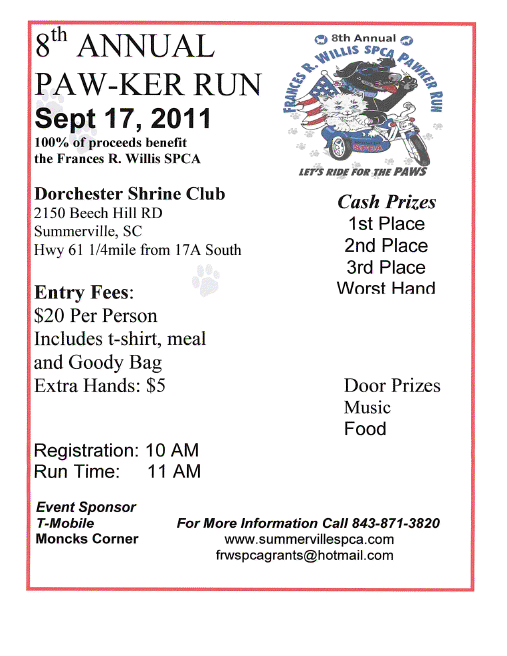 As motorcycle accident lawyers who also love animals, we’re looking forward to the 8th Annual PAW-ker Run to benefit the Frances R. Willis SPCA in Dorchester County, SC. The event will take place on Saturday, September 17, 2011 at the Dorchester Shrine Club, with registration beginning at 10 a.m. The first bike will leave at 11 a.m., and the 100-mile run features 10 stops.
As motorcycle accident lawyers who also love animals, we’re looking forward to the 8th Annual PAW-ker Run to benefit the Frances R. Willis SPCA in Dorchester County, SC. The event will take place on Saturday, September 17, 2011 at the Dorchester Shrine Club, with registration beginning at 10 a.m. The first bike will leave at 11 a.m., and the 100-mile run features 10 stops.
The SPCA relies entirely on grants, donations, and fundraisers, and 100% of the proceeds go to the organization. Last year, this run raised $14,000 for the SPCA and had almost 600 bikers in attendance. This year, the estimated number of bikers is 650, and the fundraising goal is $17,000. Previous PAW-ker Runs have helped over 4,000 lost, abandoned, and abused animals in Dorchester County, and the need continues to grow.
The entry fee is $20 per person, and includes a t-shirt, meal, koozie, and goody bag. For each extra hand played, the cost is $5. All major credit cards are accepted. Cash prizes will be awarded for first, second, third, and worst hands. A DJ will provide music, and Dorchester Shrine Club and Junior Service League of Summerville will provide a BBQ meal with dessert. Door prizes will be awarded at the end of the ride.
The Dorchester Shrine Club is located at 2150 Beech Hill Road in Summerville, and in addition to the Shrine Club and the SPCA, the stops include:
- Main Street Bar & Grill
- Fat Boys
- Sapphires Bar & Grill
- Happy Ours Bar & Grill
- Skynyrds Grill & Sports Bar
- Minky’s Social Club
- Market Street Saloon
- Shooter’s
Sponsors and support are always needed and are greatly appreciated. The SPCA is a 501(c)3 tax-exempt, non-profit organization, and if you have questions or would like to help, contact Bob Jones by phone at 843-871-3820, extension 205, or by email at frwspcagrants@hotmail.com. The SPCA website is www.summervillespca.com.
Let’s Ride for the PAWS!
For spectacular scenery, Civil War historic sites, and an exhilarating yet leisurely ride, try the Blue Ridge Parkway of Virginia.
This 367-mile-long motorcycle tour runs from Afton, VA south to Cherokee, NC. The northern half runs from Afton south to I-77, and you’ll find several Civil War sites among the breathtaking, lush country you find only in Virginia. The southern half runs from I-77 to the Cherokee Indian reservation and takes you through North Carolina’s picturesque Smokey Mountains and the town of Asheville. You’ll see blowing rock and Civil War era plantation houses as you wind your way through the mountains.
The Blue Ridge Parkway has limited access for trucks and commercial traffic, and its lower speed limit (45 mph) allows you to enjoy the ride at a relaxed pace. The road is well maintained and easy to ride, with plenty of spaces to pull off and take in the scenery or camp if you choose. If you’d like to venture off the path a bit, you can ride to the town of Mt. Airy, NC, known to the world as Mayberry from “The Andy Griffith Show”.
Each half of the parkway has a service station, and while some of the small towns have lodging, the northern part of the parkway has a motel and the central area has a bed and breakfast. You’ll want to carry a map, as the parkway has very few signs to show you where the small towns are—and you’ll definitely want to explore those and experience incredible cuisine and hospitality.
No matter where you live in South Carolina, whether in Columbia, Monks Corner, or James Island, you’ll want to make the time for this incredible journey. Riders who travel the Blue Ridge Parkway (known to them as BRP) note that the area south of Asheville, NC, on the southern half of the road, is the most spectacular part of the ride. Many of them ride during the fall when the leaves are changing, and report that it’s one of most amazing rides they’ve ever taken.
Click here for more information on the Blue Ridge Parkway.
You’ve given it a lot of thought, acclimated your dog to the motorcycle, and decided you want to take your dog riding. Now what?
It’s time to decide which accessories and safety items your dog needs. Keeping your dog safe and secure while you’re able to ride safely isn’t always easy. Depending on your dog and your riding style, you’ll need to outfit him or her comfortably with the following items.
Helmet
Typically made from the same ABS plastic used in hard hats, dog helmets guard from sun, wind, and injury, and they’re perfect for any time you take your dog with you, not just on the bike. Just as human helmets do, dog helmets come in a variety of shapes, styles, and colors, so you’ll be able to find the perfect one for Rover. You can also buy doggie doo rags, soft hats, and bandanas for when you’re taking a break from the road.
Doggles
These combination sunglasses and goggles protect your dog’s eyes from sunlight, wind, and flying objects. Doggles are widely available and come in several styles and colors.
Leather jackets and vests
For protection and fashion, leather accessories come in a wide variety of styles and colors, ranging from hooded jackets to raincoats. Make sure that leather doesn’t make your dog too hot, especially if he or she is dark colored or has a double coat.
Carriers
The carrier choice you make will depend on several factors: your dog’s size, how well he or she rides, where you prefer him or her to ride, and how well your dog will be protected. Carriers range from rear-mounted duffel bags to backpacks and from saddlebags to doggie seats.
No matter which carrier you choose, it needs to mount securely on your bike, and it needs to be durable enough to protect your pup in case of accident. While riding, your dog should have plenty of fresh air and enough wiggle room to be comfortable, and there should be nothing inside the carrier that pokes.
As South Carolina motorcycle and auto accident attorneys, we’ve seen a few sad cases where dogs were hurt or killed due to improper gear. If you ride with your dog, how do you dress him or her, and what type of carrier do you use?

